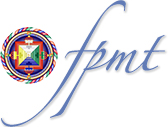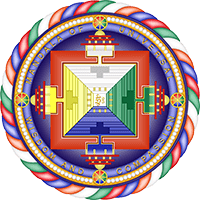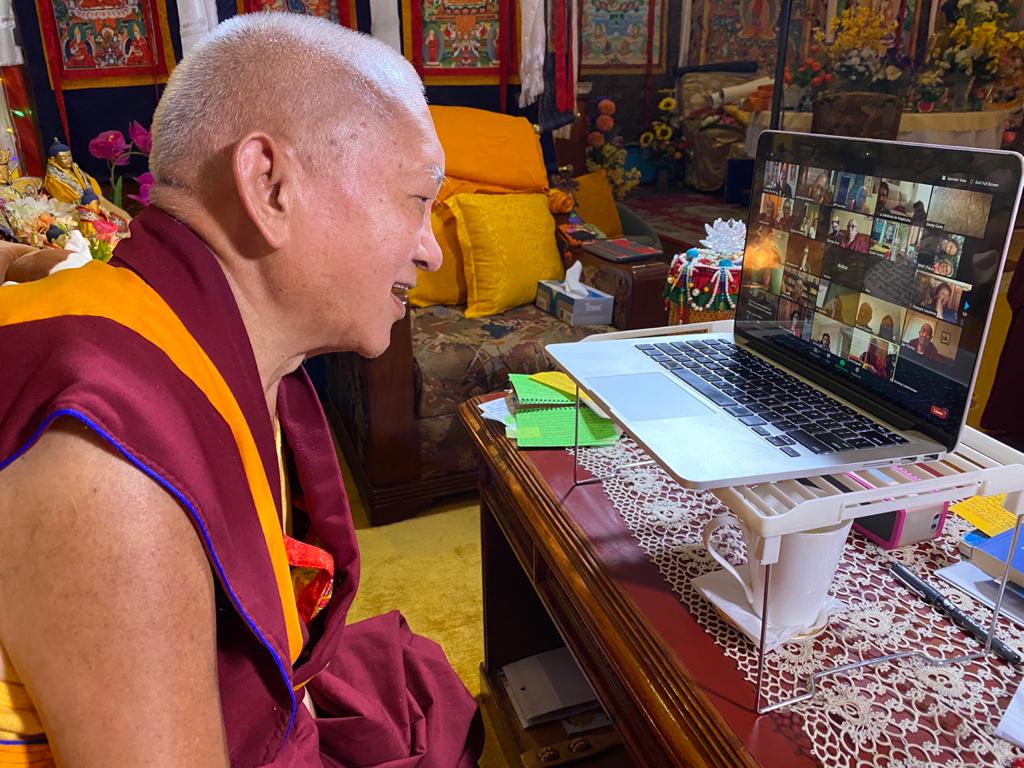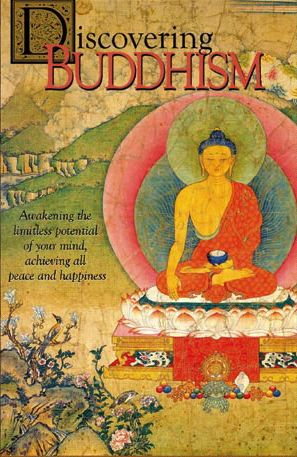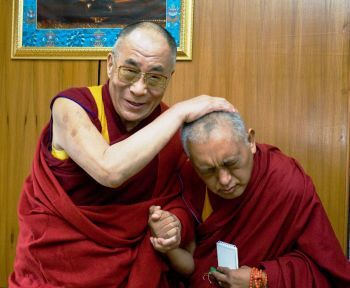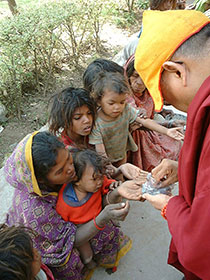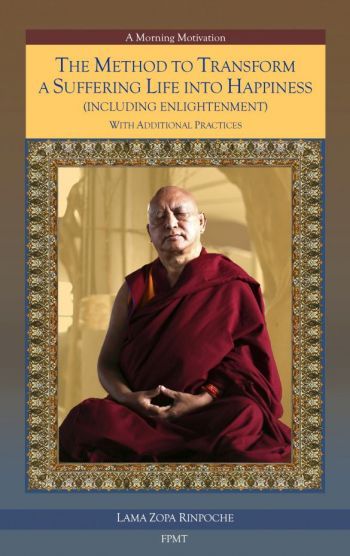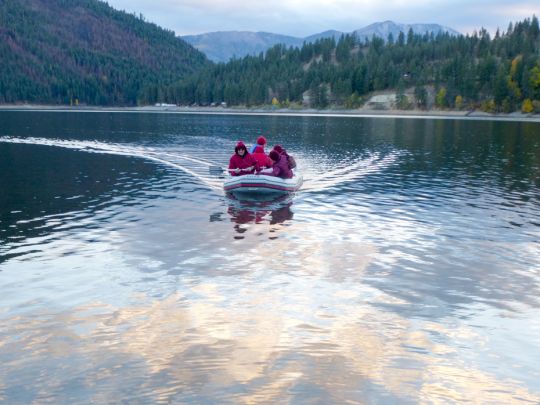- Home
- FPMT Homepage
Foundation for the Preservation of the Mahayana Tradition
The FPMT is an organization devoted to preserving and spreading Mahayana Buddhism worldwide by creating opportunities to listen, reflect, meditate, practice and actualize the unmistaken teachings of the Buddha and based on that experience spreading the Dharma to sentient beings. We provide integrated education through which people’s minds and hearts can be transformed into their highest potential for the benefit of others, inspired by an attitude of universal responsibility and service. We are committed to creating harmonious environments and helping all beings develop their full potential of infinite wisdom and compassion. Our organization is based on the Buddhist tradition of Lama Tsongkhapa of Tibet as taught to us by our founders Lama Thubten Yeshe and Lama Thubten Zopa Rinpoche.
- Willkommen
Die Stiftung zur Erhaltung der Mahayana Tradition (FPMT) ist eine Organisation, die sich weltweit für die Erhaltung und Verbreitung des Mahayana-Buddhismus einsetzt, indem sie Möglichkeiten schafft, den makellosen Lehren des Buddha zuzuhören, über sie zur reflektieren und zu meditieren und auf der Grundlage dieser Erfahrung das Dharma unter den Lebewesen zu verbreiten.
Wir bieten integrierte Schulungswege an, durch denen der Geist und das Herz der Menschen in ihr höchstes Potential verwandelt werden zum Wohl der anderen – inspiriert durch eine Haltung der universellen Verantwortung und dem Wunsch zu dienen. Wir haben uns verpflichtet, harmonische Umgebungen zu schaffen und allen Wesen zu helfen, ihr volles Potenzial unendlicher Weisheit und grenzenlosen Mitgefühls zu verwirklichen.
Unsere Organisation basiert auf der buddhistischen Tradition von Lama Tsongkhapa von Tibet, so wie sie uns von unseren Gründern Lama Thubten Yeshe und Lama Thubten Zopa Rinpoche gelehrt wird.
- Bienvenidos
La Fundación para la preservación de la tradición Mahayana (FPMT) es una organización que se dedica a preservar y difundir el budismo Mahayana en todo el mundo, creando oportunidades para escuchar, reflexionar, meditar, practicar y actualizar las enseñanzas inconfundibles de Buda y en base a esa experiencia difundir el Dharma a los seres.
Proporcionamos una educación integrada a través de la cual las mentes y los corazones de las personas se pueden transformar en su mayor potencial para el beneficio de los demás, inspirados por una actitud de responsabilidad y servicio universales. Estamos comprometidos a crear ambientes armoniosos y ayudar a todos los seres a desarrollar todo su potencial de infinita sabiduría y compasión.
Nuestra organización se basa en la tradición budista de Lama Tsongkhapa del Tíbet como nos lo enseñaron nuestros fundadores Lama Thubten Yeshe y Lama Zopa Rinpoche.
A continuación puede ver una lista de los centros y sus páginas web en su lengua preferida.
- Bienvenue
L’organisation de la FPMT a pour vocation la préservation et la diffusion du bouddhisme du mahayana dans le monde entier. Elle offre l’opportunité d’écouter, de réfléchir, de méditer, de pratiquer et de réaliser les enseignements excellents du Bouddha, pour ensuite transmettre le Dharma à tous les êtres. Nous proposons une formation intégrée grâce à laquelle le cœur et l’esprit de chacun peuvent accomplir leur potentiel le plus élevé pour le bien d’autrui, inspirés par le sens du service et une responsabilité universelle. Nous nous engageons à créer un environnement harmonieux et à aider tous les êtres à épanouir leur potentiel illimité de compassion et de sagesse. Notre organisation s’appuie sur la tradition guéloukpa de Lama Tsongkhapa du Tibet, telle qu’elle a été enseignée par nos fondateurs Lama Thoubtèn Yéshé et Lama Zopa Rinpoché.
Visitez le site de notre Editions Mahayana pour les traductions, conseils et nouvelles du Bureau international en français.
Voici une liste de centres et de leurs sites dans votre langue préférée
- Benvenuto
L’FPMT è un organizzazione il cui scopo è preservare e diffondere il Buddhismo Mahayana nel mondo, creando occasioni di ascolto, riflessione, meditazione e pratica dei perfetti insegnamenti del Buddha, al fine di attualizzare e diffondere il Dharma fra tutti gli esseri senzienti.
Offriamo un’educazione integrata, che può trasformare la mente e i cuori delle persone nel loro massimo potenziale, per il beneficio di tutti gli esseri, ispirati da un’attitudine di responsabilità universale e di servizio.
Il nostro obiettivo è quello di creare contesti armoniosi e aiutare tutti gli esseri a sviluppare in modo completo le proprie potenzialità di infinita saggezza e compassione.
La nostra organizzazione si basa sulla tradizione buddhista di Lama Tsongkhapa del Tibet, così come ci è stata insegnata dai nostri fondatori Lama Thubten Yeshe e Lama Zopa Rinpoche.
Di seguito potete trovare un elenco dei centri e dei loro siti nella lingua da voi prescelta.
- 欢迎 / 歡迎
简体中文
“护持大乘法脉基金会”( 英文简称:FPMT。全名:Foundation for the Preservation of the Mahayana Tradition) 是一个致力于护持和弘扬大乘佛法的国际佛教组织。我们提供听闻,思维,禅修,修行和实证佛陀无误教法的机会,以便让一切众生都能够享受佛法的指引和滋润。
我们全力创造和谐融洽的环境, 为人们提供解行并重的完整佛法教育,以便启发内在的环宇悲心及责任心,并开发内心所蕴藏的巨大潜能 — 无限的智慧与悲心 — 以便利益和服务一切有情。
FPMT的创办人是图腾耶喜喇嘛和喇嘛梭巴仁波切。我们所修习的是由两位上师所教导的,西藏喀巴大师的佛法传承。
繁體中文
護持大乘法脈基金會”( 英文簡稱:FPMT。全名:Found
ation for the Preservation of the Mahayana Tradition ) 是一個致力於護持和弘揚大乘佛法的國際佛教組織。我們提供聽聞, 思維,禪修,修行和實證佛陀無誤教法的機會,以便讓一切眾生都能 夠享受佛法的指引和滋潤。 我們全力創造和諧融洽的環境,
為人們提供解行並重的完整佛法教育,以便啟發內在的環宇悲心及責 任心,並開發內心所蘊藏的巨大潛能 — 無限的智慧與悲心 – – 以便利益和服務一切有情。 FPMT的創辦人是圖騰耶喜喇嘛和喇嘛梭巴仁波切。
我們所修習的是由兩位上師所教導的,西藏喀巴大師的佛法傳承。 察看道场信息:
- FPMT Homepage
- News/Media
-
- Study & Practice
-
-
- About FPMT Education Services
- Latest News
- Programs
- New to Buddhism?
- Buddhist Mind Science: Activating Your Potential
- Heart Advice for Death and Dying
- Discovering Buddhism
- Living in the Path
- Exploring Buddhism
- FPMT Basic Program
- FPMT Masters Program
- FPMT In-Depth Meditation Training
- Maitripa College
- Lotsawa Rinchen Zangpo Translator Program
- Universal Education for Compassion & Wisdom
- Online Learning Center
-
- Prayers & Practice Materials
- Overview of Prayers & Practices
- Full Catalogue of Prayers & Practice Materials
- Explore Popular Topics
- Benefiting Animals
- Chenrezig Resources
- Death & Dying Resources
- Lama Chopa (Guru Puja)
- Lama Zopa Rinpoche: Compendium of Precious Instructions
- Lama Zopa Rinpoche: Life Practice Advice
- Lama Zopa Rinpoche Practice Series
- Lamrim Resources
- Mantras
- Prayer Book Updates
- Purification Practices
- Sutras
- Thought Transformation (Lojong)
- Audio Materials
- Dharma Dates - Tibetan Calendar
- Translation Services
- Publishing Services
- Ways to Offer Support
- Prayers & Practice Materials
-
- Teachings and Advice
- Find Teachings and Advice
- Lama Zopa Rinpoche Advice Page
- Lama Zopa Rinpoche: Compendium of Precious Instructions
- Lama Zopa Rinpoche Video Teachings
- ༧སྐྱབས་རྗེ་བཟོད་པ་རིན་པོ་ཆེ་མཆོག་ནས་སྩལ་བའི་བཀའ་སློབ་བརྙན་འཕྲིན།
- Podcasts
- Lama Yeshe Wisdom Archive
- Buddhism FAQ
- Dharma for Young People
- Resources on Holy Objects
- Teachings and Advice
-
-
*If a menu item has a submenu clicking once will expand the menu clicking twice will open the page.
-
-
- Centers
-
- Teachers
-
- Projects
-
-
-
-
*If a menu item has a submenu clicking once will expand the menu clicking twice will open the page.
-
-
- FPMT
-
-
-
-
-
Use problems as ornaments, seeing them as extremely precious, because they make you achieve enlightenment quickly, by getting you to achieve bodhicitta. Experience these problems on behalf of all sentient beings, giving all happiness to sentient beings. This is the ornament.
Lama Zopa Rinpoche
-
-
-
- Shop
-
-
-
The Foundation Store is FPMT’s online shop and features a vast selection of Buddhist study and practice materials written or recommended by our lineage gurus. These items include homestudy programs, prayers and practices in PDF or eBook format, materials for children, and other resources to support practitioners.
Items displayed in the shop are made available for Dharma practice and educational purposes, and never for the purpose of profiting from their sale. Please read FPMT Foundation Store Policy Regarding Dharma Items for more information.
-
-
Lama Zopa Rinpoche News and Advice
26
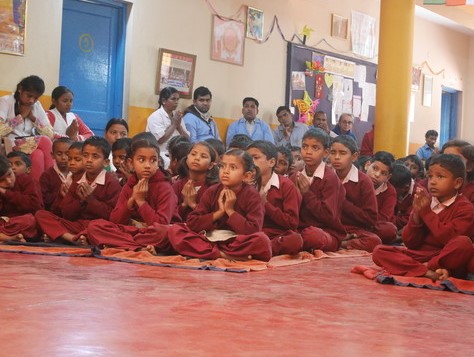
The children of Maitreya School and Tara Children’s Project attending a talk by Lama Zopa Rinpoche about the Eight Verses of Thought Transformation. January, 2017.
Lama Zopa Rinpoche was in Bodhgaya, India, for several weeks from late December 2016 through February 2017. During that time Rinpoche attended the Kalachakra initiation offered by His Holiness the Dalai Lama, went on pilgrimage to many holy sites, met with students and other lamas, and visited and made offerings, through the Lama Zopa Rinpoche Bodhichitta Fund, to three very important FPMT social projects of Root Institute: Maitreya School, Tara Children’s Project, and Shakyamuni Buddha Clinic.
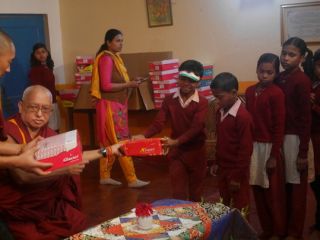
Lama Zopa Rinpoche giving gifts to the children of Maitreya School and Tara Children’s Project. January, 2017.
Maitreya School is a free school benefiting impoverished children from Bodhgaya and neighboring villages. The children not only have the chance to obtain a traditional education but, more importantly, they receive life skills in compassion, honesty, and loving-kindness presented through Buddhist study. This is the core of the training and vision of the school: making lives meaningful.
Tara Children’s Project (TCP) is the only children’s home caring for HIV-affected orphaned children in the state of Bihar. Currently there are twenty-one children living there.
Shakyamuni Buddha Clinic began in 1991 as a home for the destitute and has evolved into a diverse community health program encompassing a wide range of medical and rehabilitative services and health promotion activities. Services included allopathic medicine, homeopathic medicine, health promotion and education, and patient care.
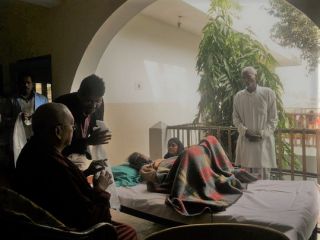
Lama Zopa Rinpoche blessing a very sick patient of Shakyamuni Buddha Clinic. January, 2017.
While at Root Institute, Lama Zopa Rinpoche offered new shoes, socks, toothbrushes, toothpaste, soap, and new towels to all the children of Maitreya School and Tara Children’s Project. Rinpoche also met with the children and gave a talk on Eight Verses for Thought Transformation.
At the Shakyamuni Buddha Clinic Rinpoche offered INR₹500 plus a blanket to mothers who have children with cerebral palsy. While there Rinpoche also blessed everyone in the clinic on that day and offered extensive prayers for a number of people who were extremely sick. Rinpoche also thanked all of the doctors and nurses of the clinic who offer such an incredible service to those in need.
Please rejoice in the incredible social services offered by Root Institute which benefit so many in need in the area. For the past six years, due to the kindness of one main benefactor, the FPMT Social Services Fund has been able to offer substantial grants toward this amazing work.
Lama Zopa Rinpoche Bodhichitta Fund enables Rinpoche’s compassionate service to others to flourish. All the offerings from the fund are used toward the creation of holy objects and extensive offerings around the world; sponsoring young tulkus, high lamas and Sangha in India, Nepal, Tibet and the West; supporting FPMT centers, projects and services; sponsoring Dharma retreats and events; funding animal liberations and blessings, and much more.
- Tagged: maitreya school, root institute, shakyamuni buddha health care center, tara children's project
23
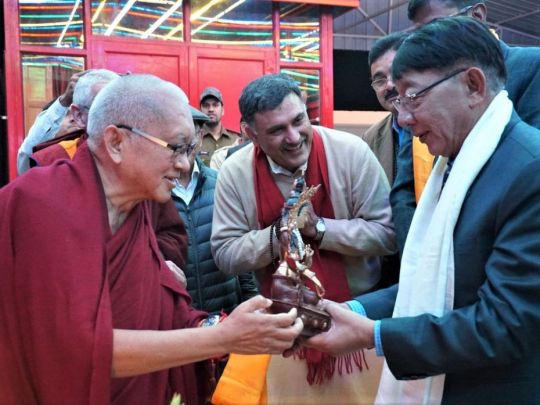
Rinpoche meeting local dignitaries at Root Institute. Bodhgaya, India, January 2017. Photo by Ven. Lobsang Sherab.
While he was in Bodhgaya, India, in January this year, Lama Zopa Rinpoche invited some influential people onto the roof of the FPMT center, Root Institute, for a small party. Included were actor Richard Gere as well as a number of local politicians and dignitaries.
During the event, Rinpoche spoke briefly about why he wants to build statues of Maitreya Buddha. The statues, he said, help people develop a good heart. That good heart in turn will help create peace and happiness in the world.
Listen to Rinpoche discuss the role of Maitreya Buddha statues in creating a peaceful and happy world on YouTube:
https://youtu.be/AYVk1VrRsek
Watch Lama Zopa Rinpoche teach LIVE at the Light of the Path 2017 retreat, August 20-September 17:
https://fpmt.org/media/streaming/lama-zopa-rinpoche-live/
Lama Zopa Rinpoche is the spiritual director of the Foundation for the Preservation of Mahayana Tradition (FPMT), a Tibetan Buddhist organization dedicated to the transmission of the Mahayana Buddhist tradition and values worldwide through teaching, meditation and community service.
- Tagged: buddha maitreya bodhgaya, lama zopa rinpoche, lama zopa rinpoche video short, richard gere, root institute, video
21
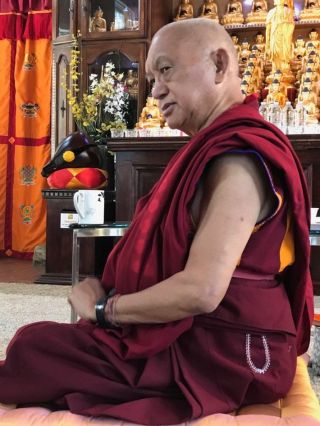
Lama Zopa Rinpoche, Kadampa Center, Raleigh, North Carolina, US, August 2017. Photo via Twitter, (@LamaZopa).
Lama Zopa Rinpoche arrived in Raleigh, North Carolina, United States, where he taught on August 19 at Kadampa Center. Then he traveled to Black Mountain where the month-long Light of the Path 2017 retreat commenced on the evening of August 20. This retreat is the fifth in a series of teaching retreats led by Rinpoche based on Lama Atisha’s text Lamp for the Path to Enlightenment.
FPMT is live video streaming Rinpoche’s teachings at the retreat in several languages. Find links to all the live video streams here:
https://fpmt.org/media/streaming/lama-zopa-rinpoche-live/
The first full day of teachings, Monday, August 21, coincides with the total solar eclipse that is crossing the United States. The retreat venue lies just outside the path of totality. Rinpoche has given advice on practices to do on eclipse days as they are merit multiplying days and can be done wherever you are in the world.
The Light of the Path retreat ends on September 17. Similar to past years, recordings and unedited transcripts from the retreat as well as Rinpoche’s teachings from other events are available on FPMT’s Rinpoche Available Now page.
Students are also encouraged to explore the Living in the Path education program, created by FPMT Education Services. Based on Rinpoche’s teachings at the Light of the Path retreats, Living in the Path is an ever-growing collection of Rinpoche’s heart advice and lamrim teachings.
Rinpoche Available Now:
https://fpmt.org/RinpocheNow
Living in the Path:
https://fpmt.org/education/programs/living-in-the-path/
Eclipse day practices:
https://fpmt.org/edu-news/practices-during-the-upcoming-solar-eclipse/
Lama Zopa Rinpoche is the spiritual director of the Foundation for the Preservation of Mahayana Tradition (FPMT), a Tibetan Buddhist organization dedicated to the transmission of the Mahayana Buddhist tradition and values worldwide through teaching, meditation and community service.
- Tagged: lama zopa rinpoche, light of the path 2017
16
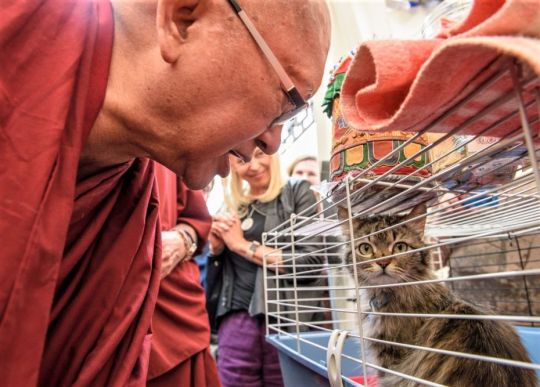
Lama Zopa Rinpoche blesses a cat in Russia. May 2017. Photo by Renat Alyaudinov.
Wherever he goes, Lama Zopa Rinpoche tries to find time to offer blessings not just to humans but also to animals. For example, in July, in New Mexico, Rinpoche blessed wild horses. In June, in California, Rinpoche blessed the Pacific Ocean and all the beings it in. In Russia, in May, Rinpoche made time to bless hundreds of pets of all kinds, including cats that had been brought from a shelter. In Nepal in April 2017, he blessed goats. And the list goes on.
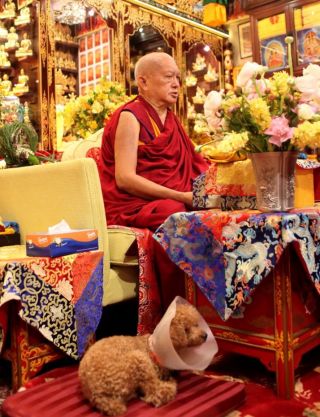
Lama Zopa Rinpoche teaches in Cham Tse Ling gompa with small dog in attendance. Hong Kong, April 2016. Photo by Ven. Thubten Kunsang.
When he stays at Buddha Amitabha Pure Land (BAPL) in Washington State, United States, Lama Zopa Rinpoche takes many measures to benefit the living beings—animals, insects, snakes, birds, and fish—who share the land and water there. Resident Sangha and visitors do the same on a regular basis even when Rinpoche is not present. Methods include the recitation of mantras, sutras, and prayers, as well as offering blessed food and other activities.
Many of these ways to bless small creatures are described by Ven. Tharchin, a resident of BAPL, in a 25-minute YouTube video on FPMT’s YouTube channel (see below).
According to Rinpoche in his book Liberating Animals from the Danger of Death, sentient beings can experience purification of their karma and avoid the lower realms in the future as a result of such practices. Rinpoche says: “When the Buddha gave teachings to 500 swans in a field, in their next life they were born as human beings. They became monks and all became arya beings, able to achieve the cessation of suffering and the true path. So the result is unbelievable, just by hearing Dharma words.”
Watch Ven. Tharchin, a resident of Buddha Amitabha Pure Land, explain the many measures that are taken there to benefit living beings:
https://youtu.be/aqORZkZoAqQ
Benefiting animals is one of Lama Zopa Rinpoche’s Vast Visions for FPMT:
https://fpmt.org/fpmt/vast-vision/#animals
For more about FPMT’s activities to benefit animals see:
https://fpmt.org/tag/animals/
Get Liberating Animals from the Danger of Death as an e-book or in a print copy from the Foundation Store and support FPMT International Office:
https://shop.fpmt.org/Liberating-Animals-eBook_p_2334.html
Watch Lama Zopa Rinpoche teach LIVE at the Light of the Path 2017 retreat August 20-September 17:
https://fpmt.org/media/streaming/lama-zopa-rinpoche-live/
Lama Zopa Rinpoche is the spiritual director of the Foundation for the Preservation of Mahayana Tradition (FPMT), a Tibetan Buddhist organization dedicated to the transmission of the Mahayana Buddhist tradition and values worldwide through teaching, meditation and community service.
- Tagged: animals, buddha amitabha pure land, lama zopa rinpoche, russia, video, video short
14
Prayer for Peace
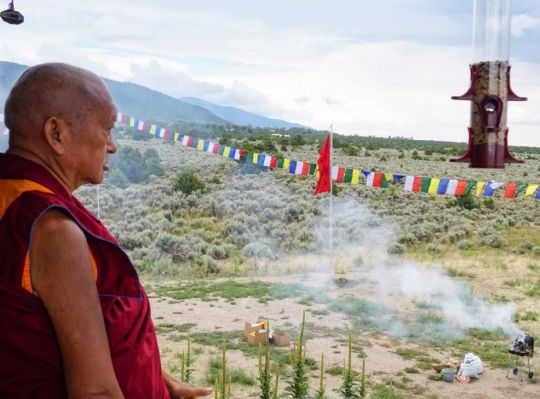
Lama Zopa Rinpoche observes while incense offerings are made while new prayer flags are hung, Taos, New Mexico, August 2017. Photo by Ven. Lobsang Sherab.
“When there was unceasing war in Kham (Me Nyak), Tibet, and nobody was able to create harmony, the Great Lord Yogi (Thang Thong Gyalpo) came to Kham, generated bodhichitta, and just by merely saying these true words and sprinkling flowers, all the vicious minds (jealousy and anger) were completely pacified and the war that had been continuous, ceased. There were prosperous harvests and so forth. The country became auspicious and peaceful. This is blessed vajra speech,” Lama Zopa Rinpoche said as preface to his translation of a prayer by the great tantric yogi Thang Thong Gyalpo.
“… Through whatever merits have come from making this translation available, may wherever this text is (whichever country) and also by reading this prayer, cause all the people’s hearts be filled with loving kindness, bodhichitta, and the thought to only benefit and not harm. May the sun of peace and happiness arise and may any wars that are happening stop immediately. May there be harmony, peace, and may there never be war or violence again.” Rinpoche made this translation of Thang Thong Gyalpo’s “Prayer for Peace” after the 9/11 terrorist attacks of 2001 in the United States.
HERE ARE THE WORDS OF TRUTH PACIFYING THE DANGERS OF WEAPONS
OM MANI PADME HUM
Great Loving Victorious One (Maitreya Buddha), Transcendental Sublime Compassionate Eye Looking One,
Wrathful Victorious Hayagriva, Fully Accomplished Totally Pure (Jetsun) Tara and so forth,
Merely hearing your holy names eliminates all dangers,
Objects of refuge in the nature of compassion, please pay attention!When the sentient beings of the time of quarreling and five degenerations
By the explosion of the great ocean of evil karma and jealousy
Are tormented by the intensive suffering of fighting and quarreling
Please dry this up by the power of transcendental wisdom and compassion.By letting great rainfalls of the nectar of loving kindness fall
On the migratory beings who are inflaming the conflagration of hatred-fire
Please grant blessings with the recognition of each other like father-mother
Then increase happiness and auspiciousness.May the multitudes of the vicious evil spirits
Who enter the mental continuum and
Change it instantly to the mind of asura
From now on never run in this area (country/world).I am requesting for even all the sentient beings who have died in the war
To abandon from that time onward all the evil karma, cause and effect,
Then having entered and been born in the Blissful Field (Amitabha’s Pure Land)
To lead all others to that Pure Land.Please bless all those who are born and die (samsaric beings)
To have a long life, no sicknesses, to pacify all quarreling and fighting,
Enjoy the ten virtues, have rainfall at the right times, always have good harvests
And for all the habitat and inhabitants to be auspicious and increase.By the ultimate reality which is pure by nature,
By phenomena having ultimate reality, cause and result are unbetrayable,
And by the compassion of the Guru, Mind-seal Deity and Rare Sublime Ones,
May these pure extensive prayers be completed.
Find “Prayer for Peace” on prayer flags available through the Foundation Store:
https://shop.fpmt.org/Prayer-Flag-to-Avert-War_p_392.html
This “Prayer for Peace” was originally posted by the Lama Yeshe Wisdom Archive, where you can read Rinpoche’s complete comments on it:
https://www.lamayeshe.com/advice/prayer-peace
Watch Lama Zopa Rinpoche’s teachings LIVE at the Light of the Path 2017 retreat:
https://fpmt.org/media/streaming/lama-zopa-rinpoche-live/
Lama Zopa Rinpoche is the spiritual director of the Foundation for the Preservation of Mahayana Tradition (FPMT), a Tibetan Buddhist organization dedicated to the transmission of the Mahayana Buddhist tradition and values worldwide through teaching, meditation and community service.
- Tagged: peace, thangtong gyalpo, world peace
9
‘Put All the Blame to One’
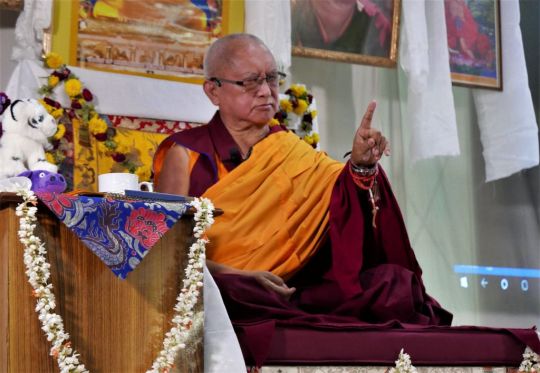
Lama Zopa Rinpoche teaching in Bangalore, India, December 2016.
Rinpoche gave this advice to one student and said it is applicable to anyone.
If you are my student, then you must do the morning motivation, The Method to Transform a Suffering Life into Happiness (Including Enlightenment). Do not just read the words, but relate them to your life. You must recite these words and if after reciting the words your mind doesn’t change, then you are not doing it [correctly].
In addition, I want you to recite these two verses as a dedication and to memorize them:
Whenever someone has an angry or devotional thought arise
Just by looking at me,
May that attitude alone become a cause that always
Accomplishes all the temporary and ultimate purposes of that being.Whenever others criticize me with their speech,
Harm me with their bodies,
Or likewise insult me behind my back,
May all of them be fortunate to achieve great enlightenment.
You must recite these two verses and if these don’t change your mind, then you are not thinking about the meaning. Therefore, use these two verses often as your dedication. This is most important to recite; it’s good to recite and to remember by heart.
You need to remember that you yourself have harmed numberless sentient beings from beginningless rebirths numberless times. You have given every kind of harm numberless times to the numberless sentient beings. Now what you experience—the way others harm you, the way they treat you, anything unpleasant—is the result of your negative karma. So you have to recognize the shortcomings of your self-cherishing thought.
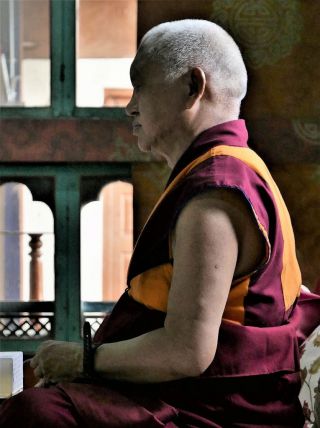
Lama Zopa Rinpoche, giving a short talk and offering blessings to people in Bhutan. June 2016. Photo by Ven. Roger Kunsang.
As the Kadampa geshe says:
Put all the blame to one. Toward others, meditate on their kindness.
Put all the blame to one—this is the self-cherishing thought. Even if someone sees you and dislikes you, thinks you are bad, or if anyone criticizes you or kicks you out of a center and so on, think it is the result of past karma, because you harmed others, numberless sentient beings, numberless times from beginningless rebirth.
Anything unpleasant you receive back is the result of your bad karma, your self-cherishing thought. This is what is to be abandoned in order to actualize bodhichitta.
In my morning motivation, it mentions, May I be used by sentient beings. This means you dedicate yourself to be the servant of sentient beings, to be totally used by sentient beings. This is what makes you achieve enlightenment as quickly as possible. Otherwise if you have too much ego, then you go to hell. If that is what you want, if you want that, then it is a totally different situation; if you would like to go to hell. But if you don’t like to go to hell, then you need to change the mind, to renounce the ego.
As the Kadampa geshe mentions, the self-cherishing thought is something to be thrown away—a long distance—immediately. But others are to be taken into your heart and cherished immediately.
With much love and prayers,
Lama Zopa Rinpoche
Transcribed by Ven. Holly Ansett, Buddha Amitabha Pure Land, Washington, USA, November 6, 2016. Edited by Lama Yeshe Wisdom Archive under the title “Renounce the Ego“:
https://www.lamayeshe.com/advice/renounce-ego.
Get copies of the The Method to Transform a Suffering Life into Happiness (Including Enlightenment) from the Foundation Store.
Lama Zopa Rinpoche is the spiritual director of the Foundation for the Preservation of Mahayana Tradition (FPMT), a Tibetan Buddhist organization dedicated to the transmission of the Mahayana Buddhist tradition and values worldwide through teaching, meditation and community service. Learn more about Lama Zopa Rinpoche and his vision for a better world. Sign up to receive news and updates.
- Tagged: kadampa teachings, lama zopa rinpoche, lojong, practice
- 0
7
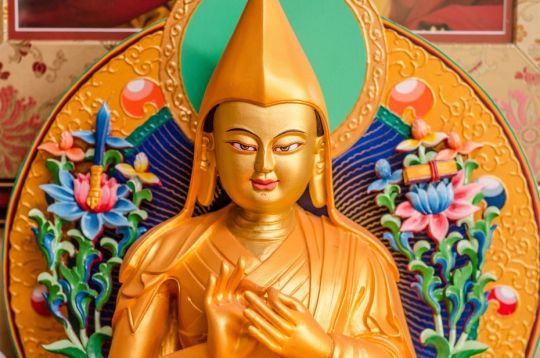
Statue of Lama Tsongkhapa at Kachoe Dechen Ling, Lama Zopa Rinpoche’s home in California, US, 2015. Photo by Chris Majors.
When training in the graduated path to enlightenment (lamrim), Lama Zopa Rinpoche emphasizes that bodhichitta is most important.
In the video clip below, recorded during the Light of the Path 2016 retreat, Rinpoche notes that although bodhichitta as a topic appears quite late in the lamrim, in fact students should have a bodhichitta motivation for all their activities from the beginning. Even learning or meditating on the initial stages of the path, like guru devotion, should be done with a bodhichitta motivation, and so should all of every Dharma student’s daily activities. “You have to know that,” says Rinpoche.
That bodhichitta motivation is how students move toward enlightenment, Rinpoche explains, and how everything they do becomes a cause for freeing sentient beings from samsara. Rinpoche stresses that those teaching and studying lamrim need to make bodhichitta the emphasis at all times.
Watch Rinpoche teach about the need to emphasize bodhichitta:
https://youtu.be/FrCgwcegKlE
Watch more video from the 2016 Light of the Path Retreat and find links to translations, MP3s, and the complete transcript:
https://fpmt.org/media/streaming/teachings-of-lama-zopa-rinpoche/light-of-the-path-teachings-2016/
Watch Lama Zopa Rinpoche teach LIVE at the Light of the Path 2017 retreat, August 20-September 17:
https://fpmt.org/media/streaming/lama-zopa-rinpoche-live/
See more videos of teachings by Lama Zopa Rinpoche at Rinpoche Available Now:
https://fpmt.org/rinpochenow/
Lama Zopa Rinpoche is the spiritual director of the Foundation for the Preservation of Mahayana Tradition (FPMT), a Tibetan Buddhist organization dedicated to the transmission of the Mahayana Buddhist tradition and values worldwide through teaching, meditation, and community service.
2
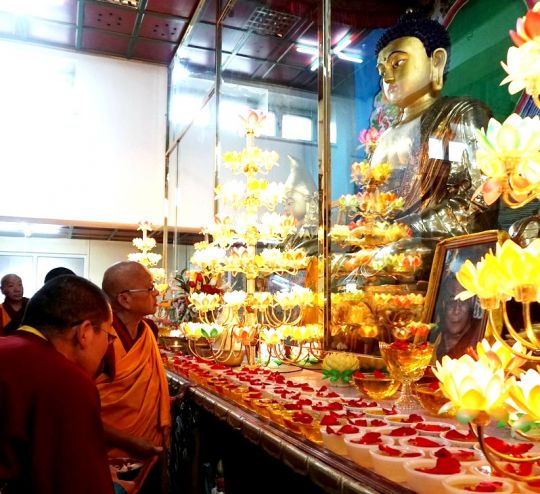
Lama Zopa Rinpoche makes offerings to the holy objects at Idgaa Choizinling Monastery,
Ulaanbaatar, Mongolia, May 2017. Photo by Ven. Lobsang Sherab.
Want to benefit others?
In the short video below, Lama Zopa Rinpoche talks about how to benefit others extensively, how to collect great merit, and how to reach full enlightenment. The video is an excerpt from his teachings at the 2016 Light of the Path retreat.
“Life is not long, life is short. We live with the wrong concept of permanence … That concept is cheating you,” says Rinpoche.
“How do we benefit others extensively?” he then asks. He answers, “Stop thinking and worrying about ‘When can I be happy?'” He adds that believing in the real “I” leads to anger, and understanding that it is merely labelled by mind puts a stop to reasons for anger and unhappiness.
Watch Lama Zopa Rinpoche on “How to Practice Skillfully and Collect Extensive Merits”:
https://youtu.be/ahVvZKNTQGg
Watch more video from the 2016 Light of the Path Retreat and find links to translations, MP3s, and the complete transcript:
https://fpmt.org/media/streaming/teachings-of-lama-zopa-rinpoche/light-of-the-path-teachings-2016/
Registration for the Light of the Path 2017 retreat closes this coming Friday, August 4. You can register for the retreat at https://www.blueridgeassembly.org/light-path-retreat/. Learn more about the retreat at: https://kadampa-center.org/light-path-retreat-2017/.
Light of the Path 2017 will be live webcast at: https://www.youtube.com/c/fpmtinc/live/. See more videos of teachings by Lama Zopa Rinpoche at Rinpoche Available Now: https://fpmt.org/rinpochenow/.
Lama Zopa Rinpoche is the spiritual director of the Foundation for the Preservation of Mahayana Tradition (FPMT), a Tibetan Buddhist organization dedicated to the transmission of the Mahayana Buddhist tradition and values worldwide through teaching, meditation, and community service.
26
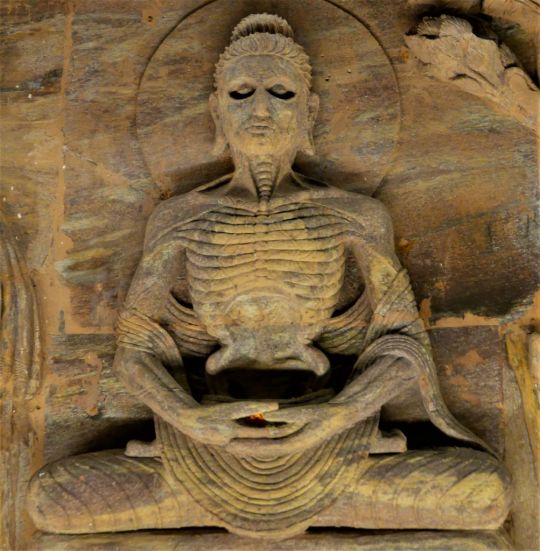
Statue portraying the Buddha during his years as an ascetic, taken during Lama Zopa Rinpoche’s visit, Root Institute, Bodhgaya, India, January 2017. Photo by Ven. Roger Kunsang.
Will renunciation bring us happiness or just more suffering?
Lama Zopa Rinpoche discussed this question in his book How to Practice Dharma: Teachings on the Eight Worldly Dharmas.
Lama Zopa Rinpoche advised that “any action done free from the three poisonous minds of greed, hatred, and ignorance is the cause of happiness … We don’t have to wait until our future lives to experience this happiness. As soon as we stop the dissatisfied mind, immediately—immediately—there is the result, happiness.”
“At first we might be nervous about letting go of desire,” he explained, “because it’s normal for us to equate desire with happiness. In fact, it is exactly the opposite. As soon as we let go of desire, we achieve inner peace, satisfaction, and happiness. We become independent. Before we were dictated to, controlled by desire, but now we have achieved real independence, real freedom.”
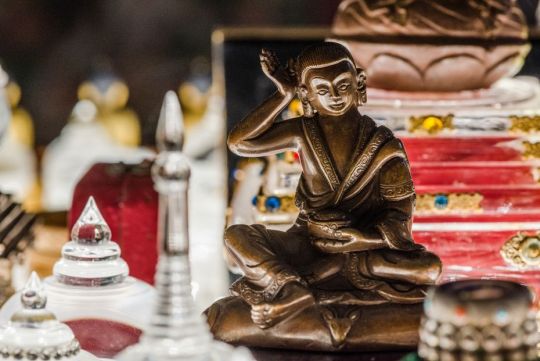
A statue of Milarepa at Kachoe Dechen Ling, Aptos, California, US, 2015. Photo by Chris Majors.
Citing the example of Milarepa, Rinpoche added, “Living without food, clothing, and reputation didn’t cause him any problems because of his Dharma practice. He achieved all the higher realizations and then enlightenment in that one lifetime all due to the power of his pure Dharma, renouncing suffering, renouncing this life. His mind was happier than that of the king.”
Rinpoche concluded by saying, “It is completely wrong to think that Dharma only brings happiness in future lifetimes but not in this one. Dharma brings peace and happiness to the mind the very moment we practice and live in the Dharma. We feel its effects immediately.”
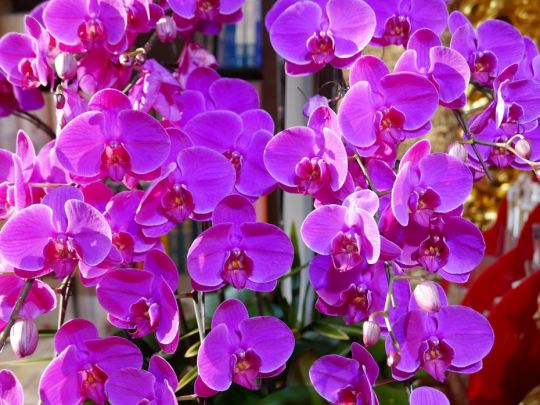
Flowers at Buddha Amitabha Pure Land, 2016. Photo by Ven. Roger Kunsang.
Lama Zopa Rinpoche is the spiritual director of the Foundation for the Preservation of Mahayana Tradition (FPMT), a Tibetan Buddhist organization dedicated to the transmission of the Mahayana Buddhist tradition and values worldwide through teaching, meditation, and community service.
- Tagged: lama zopa rinpoche, renunciation
19
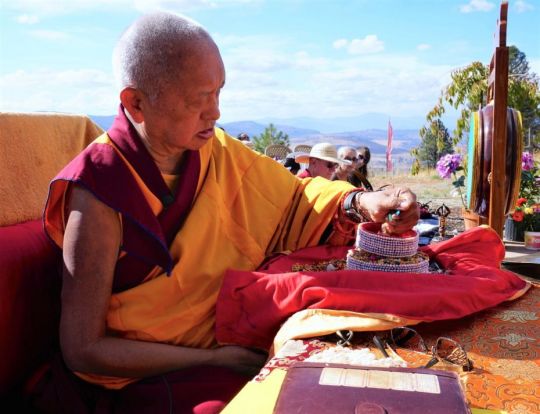
Lama Zopa Rinpoche offering a mandala, Washington State, US, October 2016. Photo by Ven. Lobsang Sherab.
What is the most important thing to remember when doing mandala offerings?
Lama Zopa Rinpoche has explained that, “Many high lamas have made comments on [the mandala offering]. The main purpose is to create merit, so it’s important that your visualization is good quality and most extensive. Otherwise, there is not much reason to do it. Lama Tsongkhapa explained mandala offerings in the Lamrim Chenmo. The key thing regarding mandala offerings is to visualize clearly and as much as possible. The essence is clear and plenty, to create merit.”
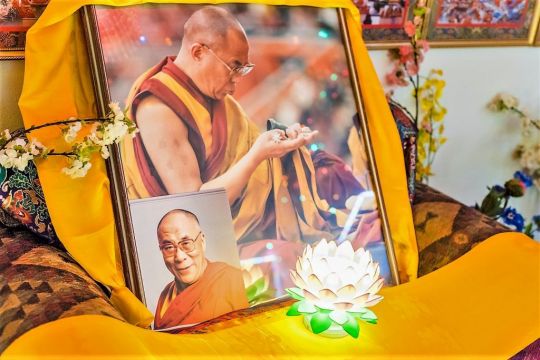
A photo of His Holiness the Dalai Lama offering a mandala, taken at the home of Lama Zopa Rinpoche at Buddha Amitabha Pure Land, Washington State, US, 2015. Photo by Chris Majors.
If we visualize well, what happens?
Rinpoche said, “All the enjoyments in all the realms is the result. … [You should] visualize offerings on every atom (like Samantabhadra) and then from each of those atoms, beams are emitted and carry mandala offerings that fill the sky and become numberless. Everything you visualize should be big, huge!”
Rinpoche concluded,”I heard that one lama takes more than an hour to visualize the mandala. This is a great lama. … The more you can visualize, the more merit you create!”
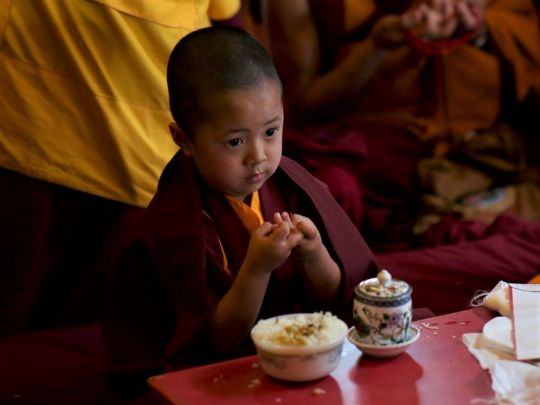
Offering a mandala at Kopan Monastery, Nepal, March 2017. Photo by Bill Kane.
Find the complete teaching here:
https://www.lamayeshe.com/advice/mandala-offerings
Lama Zopa Rinpoche is the spiritual director of the Foundation for the Preservation of Mahayana Tradition (FPMT), a Tibetan Buddhist organization dedicated to the transmission of the Mahayana Buddhist tradition and values worldwide through teaching, meditation, and community service.
- Tagged: lama zopa rinpoche, mandala, merit, offerings
17
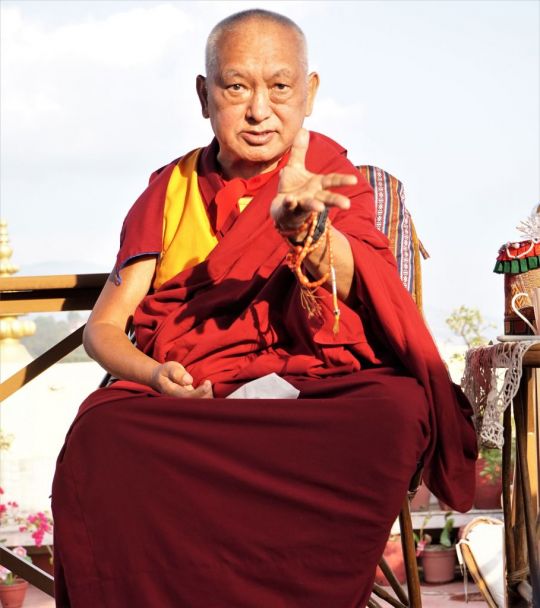
Lama Zopa Rinpoche outside his room at Kopan Monastery, Nepal, December 2016. Photo by Ven. Lobsang Sherab.
In October 2016, a student wrote to Lama Zopa Rinpoche asking how to deal with a situation in which an individual behaved in ways that were angry and unkind. Rinpoche typed out the following reply himself from Buddha Amitabha Pure Land in Washington State, US:
Usually when you are being sincerely kind towards a person, that person learns from you. Then they become kind to you. Sometimes this takes time.
Patience is unbelievable when you practice it. It brings success and happiness in this life and future lives, for hundreds of thousands of lifetimes. Through the development of patience, you can achieve enlightenment and free yourself from the oceans of suffering of samsara. Also you can enlighten the other person. With bodhichitta, you can utilize the harm to achieve enlightenment and the happiness of every sentient being of the six realms. You can benefit the other person in that way.
In Sydney, Australia, I heard about a family that bought a new car. The neighbor did not like the family, and he made marks on the car once or twice. Then the mother of the family asked a Dharma student what to do about this. The student explained to the mother what he thought Lama Zopa would do to the neighbors who were marking the car. He thought Lama Zopa would buy them a present, whatever they liked. So the mother checked what the neighbor liked, and it seemed that he would like a ball very much. So she bought a few balls. At the beginning he did not accept. But then he accepted the balls, and he was very happy. And he erased the marks he had made on the car.
Your friend who is angry towards you can be the most kind person in your life if you use the opportunity to practice patience or compassion towards her. Then you will be able to achieve enlightenment quickly. And after that, you will be able to liberate mother sentient beings from the oceans of suffering of samsara and bring them to full enlightenment. If someone is just nice to you, flattering you, giving you food and so forth, that just brings attachment, and that becomes cause of samsara and the lower realms.
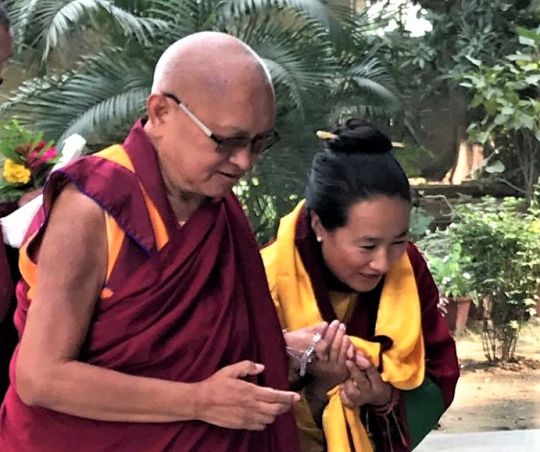
Lama Zopa Rinpoche with Khandro-la, Bodh Gaya, India, January 2017. Photo by Bill Kane.
Lightly edited by Ven. Holly Ansett and Mandala.
Lama Zopa Rinpoche is the spiritual director of the Foundation for the Preservation of Mahayana Tradition (FPMT), a Tibetan Buddhist organization dedicated to the transmission of the Mahayana Buddhist tradition and values worldwide through teaching, meditation and community service.
12
Lama Zopa Rinpoche on Shopping
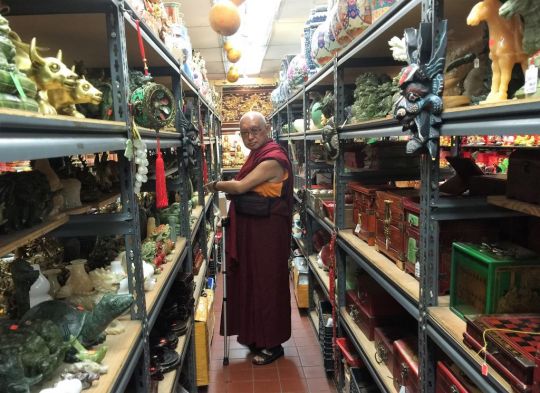
Lama Zopa Rinpoche shopping in New York City, US, 2016. Photo by Ven. Roger Kunsang.
Can shopping go along with Dharma?
In 2009, Lama Zopa Rinpoche gave some advice on how to make shopping a virtuous activity.
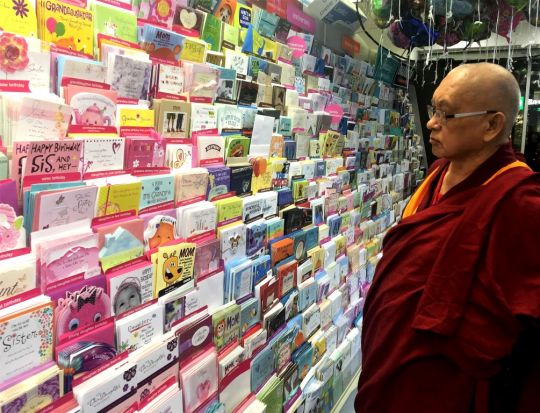
Lama Zopa Rinpoche shopping in New York City, US, 2016. Photo by Ven. Roger Kunsang.
Rinpoche said, “When you do shopping, watch and prepare your motivation. When you are in the shop, either do it to fulfill the wishes of the guru or to benefit and serve other sentient beings. The ultimate purpose is to fulfill the guru’s advice. So, you buy these things to survive so as to fulfill the wishes of the guru or benefit sentient beings. This way it becomes an antidote to attachment, becomes a virtuous activity, Dharma, and collects extensive merit.”
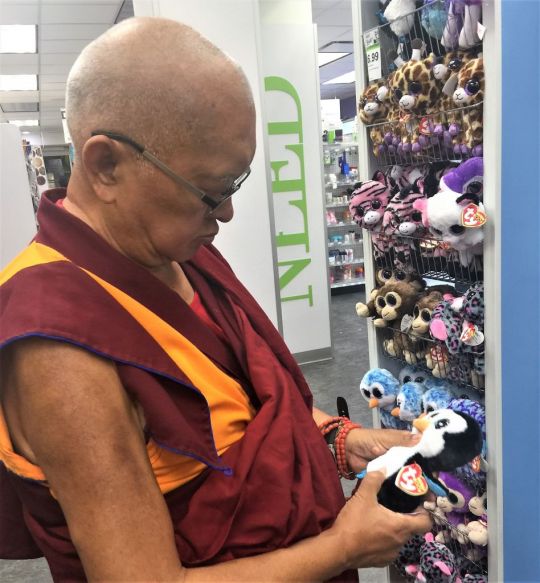
Lama Zopa Rinpoche shopping for stuffed toys in New York City, US, 2016. Photo by Ven. Roger Kunsang.
Find the original teaching here:
https://www.lamayeshe.com/advice/restaurants-and-shopping
Lama Zopa Rinpoche is the spiritual director of the Foundation for the Preservation of Mahayana Tradition (FPMT), a Tibetan Buddhist organization dedicated to the transmission of the Mahayana Buddhist tradition and values worldwide through teaching, meditation and community service.
- Tagged: attachment, lama zopa rinpoche, shopping
- Home
- News/Media
- Study & Practice
- About FPMT Education Services
- Latest News
- Programs
- New to Buddhism?
- Buddhist Mind Science: Activating Your Potential
- Heart Advice for Death and Dying
- Discovering Buddhism
- Living in the Path
- Exploring Buddhism
- FPMT Basic Program
- FPMT Masters Program
- FPMT In-Depth Meditation Training
- Maitripa College
- Lotsawa Rinchen Zangpo Translator Program
- Universal Education for Compassion & Wisdom
- Online Learning Center
- Prayers & Practice Materials
- Overview of Prayers & Practices
- Full Catalogue of Prayers & Practice Materials
- Explore Popular Topics
- Benefiting Animals
- Chenrezig Resources
- Death & Dying Resources
- Lama Chopa (Guru Puja)
- Lama Zopa Rinpoche: Compendium of Precious Instructions
- Lama Zopa Rinpoche: Life Practice Advice
- Lama Zopa Rinpoche Practice Series
- Lamrim Resources
- Mantras
- Prayer Book Updates
- Purification Practices
- Sutras
- Thought Transformation (Lojong)
- Audio Materials
- Dharma Dates – Tibetan Calendar
- Translation Services
- Publishing Services
- Teachings and Advice
- Find Teachings and Advice
- Lama Zopa Rinpoche Advice Page
- Lama Zopa Rinpoche: Compendium of Precious Instructions
- Lama Zopa Rinpoche Video Teachings
- ༧སྐྱབས་རྗེ་བཟོད་པ་རིན་པོ་ཆེ་མཆོག་ནས་སྩལ་བའི་བཀའ་སློབ་བརྙན་འཕྲིན།
- Podcasts
- Lama Yeshe Wisdom Archive
- Buddhism FAQ
- Dharma for Young People
- Resources on Holy Objects
- Ways to Offer Support
- Centers
- Affiliates Area
- Teachers
- Projects
- Charitable Projects
- Make a Donation
- Applying for Grants
- News about Projects
- Other Projects within FPMT
- Support International Office
- Projects Photo Galleries
- Give Where Most Needed
- FPMT
- Shop
Translate*
*powered by Google TranslateTranslation of pages on fpmt.org is performed by Google Translate, a third party service which FPMT has no control over. The service provides automated computer translations that are only an approximation of the websites' original content. The translations should not be considered exact and only used as a rough guide.Superficial observation of the sense world might lead you to believe that people’s problems are different, but if you check more deeply, you will see that fundamentally, they are the same. What makes people’s problems appear unique is their different interpretation of their experiences.
